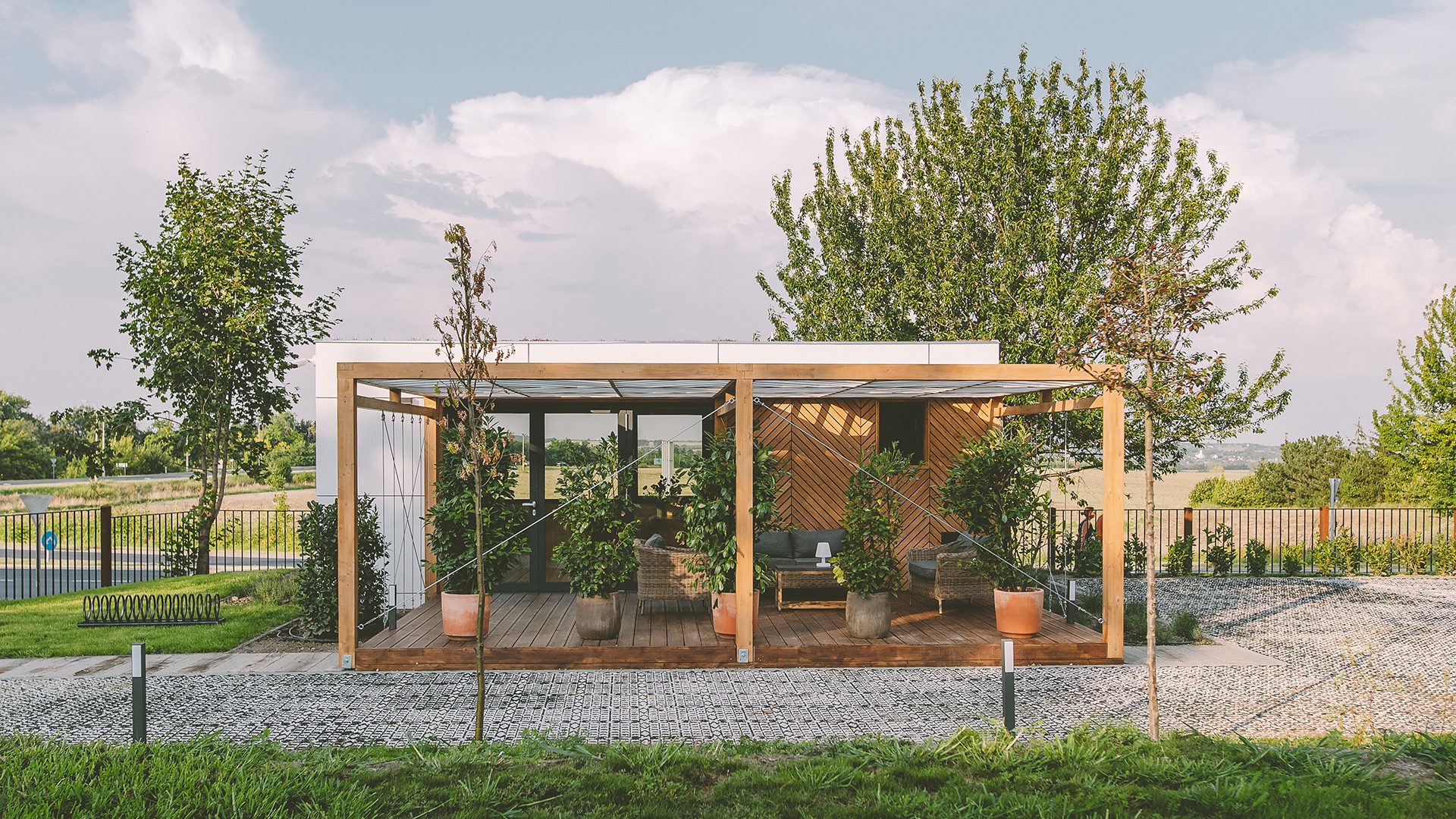Carbon Compact Project
In 2020 Hárs Kompaktház Kft. will implement the development of a carbon-neutral compact house at Mathiasz Innopark, Balatonvilagos. The project is an architectural development that results in an innovative, factory-produced, modular, road-transportable carbon neutral compact house. One of the main goals of the development is to keep the carbon footprint positive throughout the life cycle of the building. In the case of buildings, the full carbon footprint calculation gives accurate results for the environmental impact (Whole Life Carbon Profiling). The detailed test calculates the co2 emissions of the building over its lifetime. This includes the extraction, production and transportation of raw materials, the construction of the building (transport, installation), operation (maintenance, repair, replacement, energy use) and at the end of its service life, its demolition and reuse. To achieve this, the following options are available.
During the design phase, the aim is to test and select raw materials with low built-in energy content and positive or near zero emissions. Alternatively, the goal os to reduce the power consumption of operating the house to zero. This can be reached by properly insulating the house, creating a so-called passive house. A++ energy-intensive passive housings can be achieved with extreme insulation methods to minimalise winter heat loss through the building structures, as well as heat loss through air exchange with a heat recovery ventilation equipment, and taking advantage of passive solar energy and heat gains generated by house users. Additional energy and time can be saved due to the compact, prefabritated design of the houses. The finished house, produced under controlled, factory conditions, is delivered to the installation site, where the on-site work is reduced to the minimum possible. The aim of the project is to also plan transport and lifting technology, in which road and rail transport options are also taken into account. In order to further improve the carbon footprint, the aim is to create an active house beyond the passive house. An active house generates more energy than it consumes, thus re-producing the energy needed to construct it. To make this possible, it is appropriate to analize and design state-of-the-art heat pump heating and cooling systems, solar collectors and solar panel systems, and other smart ventilation, shielding and renewable energy production solutions. Another research objective is to examine the “smarthouse” solutions on the market, which can further improve energy use. We will also explore the possibility of the house operating independently off the grid.
The final objective of the project is to create a prototype of at least 3 units, with a layout of at least 90 m2 gross, which meets the abovementioned requirements. This prototype will then be tested during a 1-month test period to meet the planned energy production and sustainability requirements. As a result of the project, calculation-backed production designs and prototypes are created. The innovation content of the project, in addition to the carbon neutrality of the house, is the pre- and serial production of the product.

